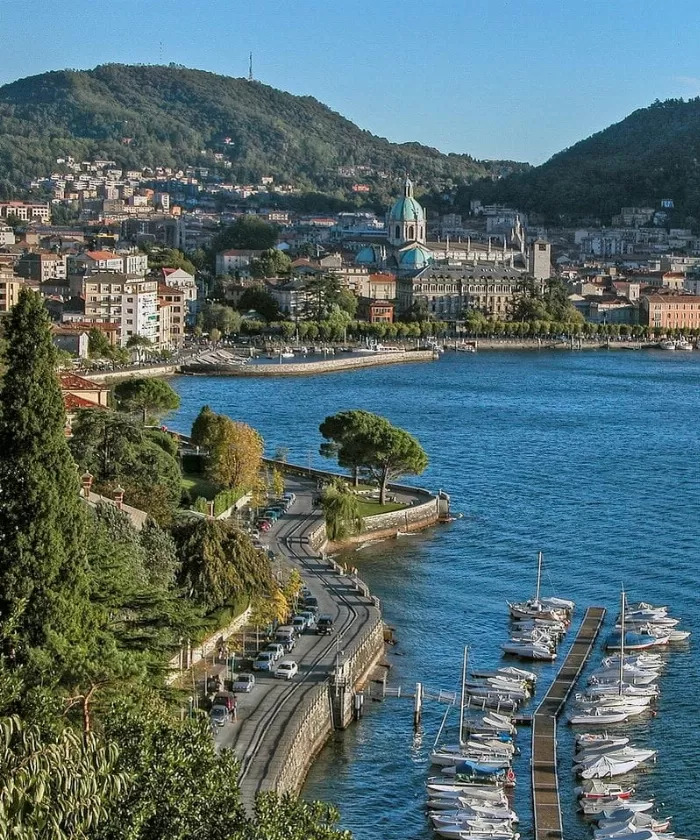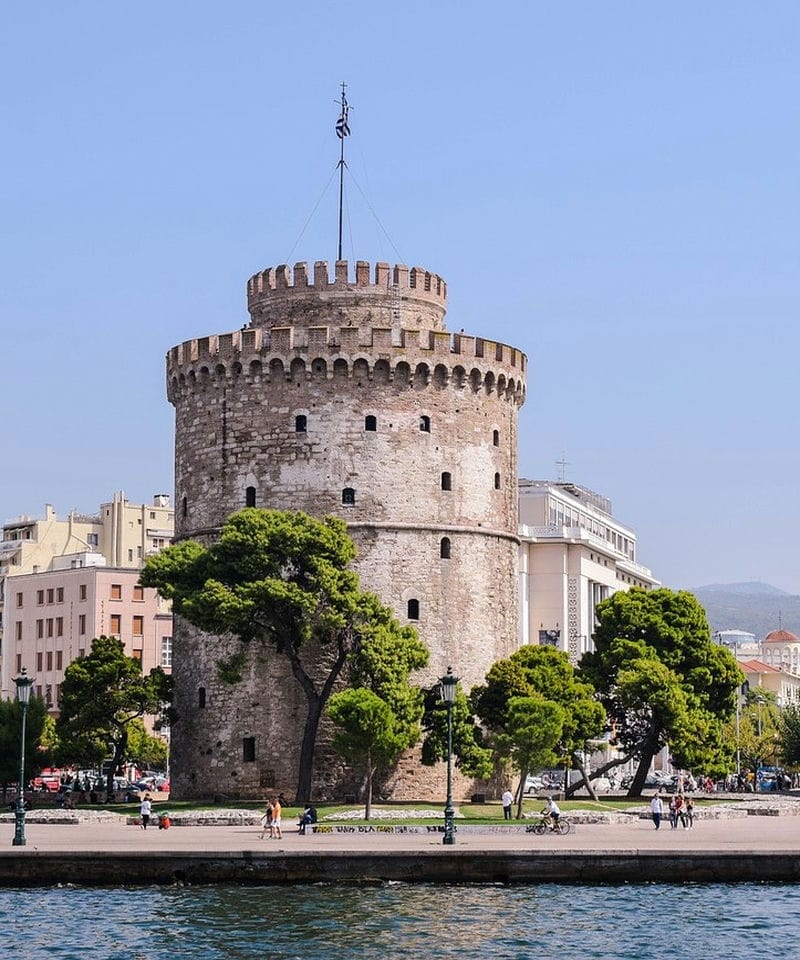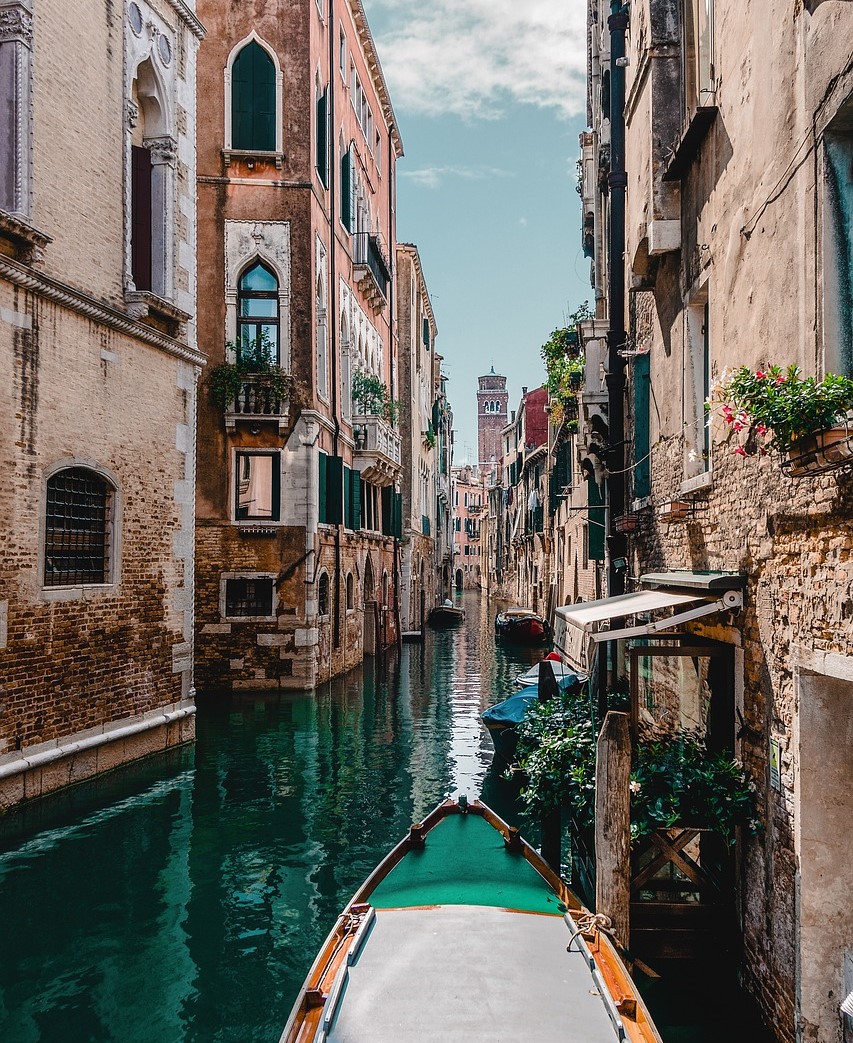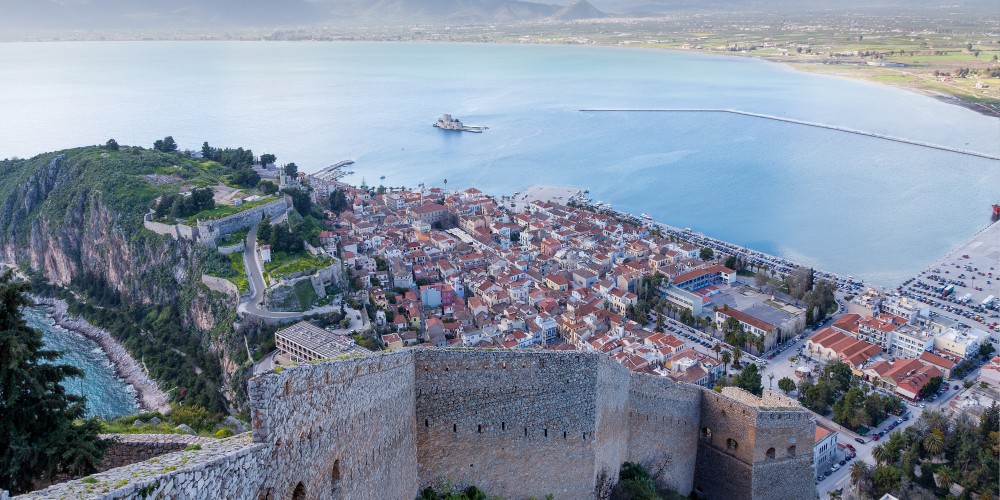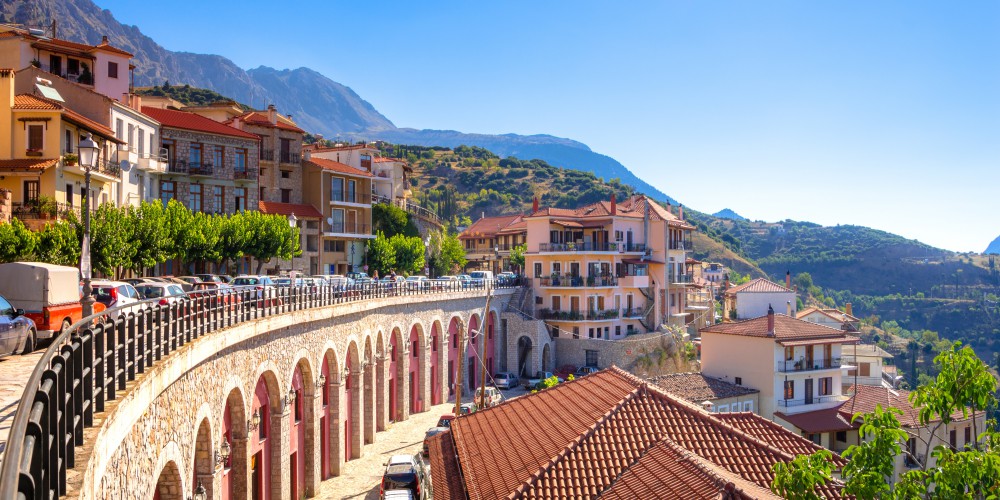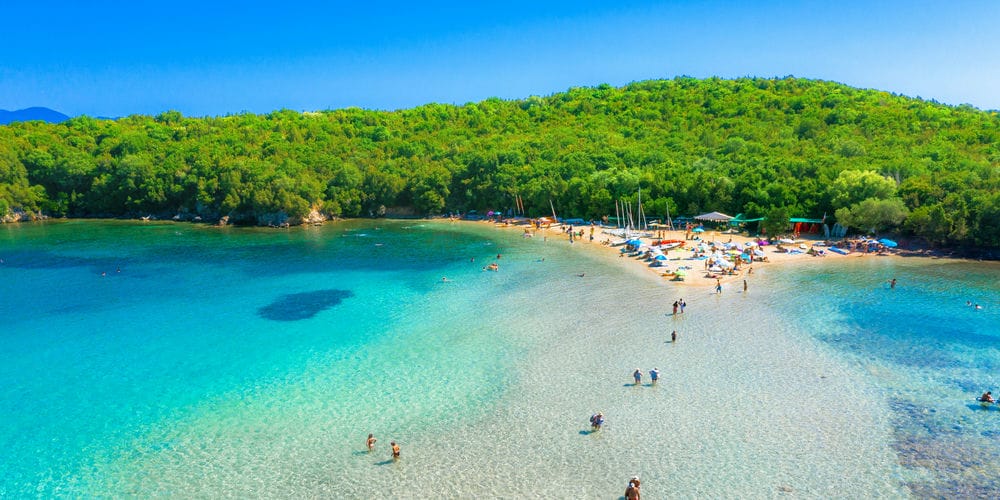
Day Trips From Thessaloniki For a Mesmerizing Experience
Key Takeaways
- Explore diverse day trips from Thessaloniki, including historical and natural sites.
- Experience the beauty of Meteora, Mount Olympus, and Chalkidiki beaches.
- Discover Thessaloniki's cultural gems, from Byzantine churches to Roman sites.

Thessaloniki, Greece's vibrant second city, offers not only a rich urban history but also a gateway to amazing day trips. and
With options that suit history buffs, nature lovers, and those looking for relaxation, Thessaloniki is a perfect starting point for exploring Northern Greece.
Whether you're visiting for a short stay or looking to escape the hustle of city life, there are plenty of memorable day trips from Thessaloniki that promise to enrich your Greek travel experience.
A visit to the stunning Meteora Monasteries provides breathtaking views and a deep dive into monastic life balanced on rock pillars.
For those seeking a taste of myth and legend, a tour to Mount Olympus allows travelers to explore Greece's highest peak, once considered the home of the gods.
The beaches of Chalkidiki offer another fantastic day getaway, where the blue lagoon beckons with its soothing waters.
In addition to natural beauty, Thessaloniki itself brims with cultural and archaeological treasures too. Byzantine churches, remnants of the Roman Era, and sites like the Arch of Galerius provide layers of intrigue for any visitor.
Whether it's venturing to historical places like Vergina, the ancient city of Aigai, or wandering through lively spots such as Agora Modiano, the surrounding areas of Thessaloniki reveal a wealth of discoveries waiting to be explored.
Meteora Monastery

Meteora Monastery is a unique and awe-inspiring destination near Thessaloniki.
Visitors can experience majestic monasteries perched atop rock pillars and a deep connection with history and spirituality.
With its stunning views and cultural significance, it's a highlight for travelers exploring Greece.
Overview and History
Meteora is renowned for its dramatic monasteries perched atop rock formations. It's recognized as a UNESCO World Heritage Site.
The first monasteries were constructed in the 14th century. During this period, monks sought refuge from political upheaval by building almost inaccessible monasteries.
By the 16th century, Meteora had 24 monasteries.
Today, only six are active. These structures reflect a unique architectural style that has captured the fascination of visitors worldwide.
How to Get There
Travelers have several options for reaching Meteora from Thessaloniki. One popular way is by train.
The train ride offers a scenic view of the Greek countryside and takes around 3 hours to reach Kalabaka, the gateway to Meteora.
Alternatively, visitors can choose a bus or a private car. Guided tours provide an easy and informative way to visit.
They often include transportation and a local guide. Tour operators like Visit Meteora and Ammon Express facilitate organized day tours and trips.
Activities and Attractions
Visitors to Meteora can explore the active monasteries, like Great Meteoron and Varlaam. Each monastery holds rich religious artifacts and frescoes.
Hiking is popular, with trails offering breathtaking views of the rock formations. Photography enthusiasts will appreciate the panoramic views, ideal for capturing the majestic landscape. After exploring, visitors can enjoy local cuisine in Kalabaka.
Educational tours are available, offering insights into Meteora's history and architecture.
Best Time to Visit
While Meteora can be visited year-round, the best times are during late spring (April to June) and early fall (September to October). During these periods, the weather is mild, and the landscape is lush.
Summer months can be hot and crowded, while winter might bring rain or fog, obscuring views. Planning a visit during weekdays can also help avoid larger crowds, providing a more peaceful experience at the monasteries.
Mount Olympus

Mount Olympus, the highest mountain in Greece, holds great significance both culturally and naturally.
Nestled between Thessaly and Macedonia, it is famous for its rich mythology, diverse hiking trails, guided tours, and unique flora and fauna.
Mythological Significance
Mount Olympus is known as the mythical home of the 12 Greek gods, including Zeus, Hera, and others. In ancient Greek mythology, it is the seat of the gods, where they watched over the world. This tall and isolated mountain symbolized power and authority. It has inspired countless stories and legends, making it a revered destination for those interested in ancient cultures and mythology.
Hiking Trails and Routes
The hiking trails on Mount Olympus cater to all experience levels.
The most famous trail, the E4 European Path, is perfect for adventurous hikers. Starting from Litochoro, a picturesque village, hikers ascend through lush forests and rocky paths.
Other trails like the Prionia to Skala route offer challenging yet rewarding experiences. It's wise to bring essential gear, such as water, snacks, and maps.
For more detailed hiking advice, explore this guide.
Guided Tours and Solo Trips
Guided tours offer an insightful way to explore Mount Olympus. They provide structured routes, expert guides, and insights into the mountain’s history and mythological tales.
These tours often include visits to nearby attractions and historical monuments like the archaeological site of Dion.
Solo hikers can enjoy flexibility but should be well-prepared with maps and necessary gear. They must follow marked paths to ensure safety.
Flora and Fauna
Mount Olympus boasts a rich variety of flora and fauna. The mountain's diverse ecosystems include dense forests, rocky landscapes, and alpine meadows.
Unique plant species thrive here, such as the endemic Jankaea heldreichii. Wildlife, including deer and eagles, is abundant, drawn by the mountain's untouched habitats.
Conservation efforts help preserve this unique biodiversity, ensuring visitors can enjoy its natural beauty.
Chalkidiki

Chalkidiki is a popular destination for day trips from Thessaloniki. Known for its beautiful beaches, clear waters, and rich history, Chalkidiki is a must-see.
Visitors can explore the region's three peninsulas, enjoy sunbathing on stunning beaches, engage in exciting water activities, and savor local Greek cuisine.
Overview of the Three Peninsulas
Chalkidiki is shaped like a trident with three peninsulas: Kassandra, Sithonia, and Mount Athos.
Kassandra is bustling with resorts and nightlife, making it great for those who enjoy lively environments.
Sithonia offers picturesque landscapes with hidden bays perfect for relaxation.
Mount Athos is a monastic state and a significant religious site, attracting visitors for its spiritual and historical value. Access to Mount Athos is limited, usually to men with special permissions.
Best Beaches to Visit
Chalkidiki is known for its pristine beaches.
In Kassandra, Kalithea Beach is famous for its turquoise waters and vibrant beach bars.
Sithonia's Kavourotripes Beach, often called Orange Beach, features striking rock formations and clear waters ideal for swimming.
Toroni Beach is another highlight in Sithonia, offering a long stretch of sand and historical ruins nearby. Each beach provides its own unique backdrop for a perfect day in the sun.
Water Sports and Activities
Chalkidiki offers various water sports like snorkeling, scuba diving, and jet skiing.
Sithonia is popular for diving due to its diverse marine life and clear waters.
Kassandra hosts several water sports centers where visitors can try jet skiing and windsurfing.
Boat tours allow exploration of hidden coves and snorkeling spots, providing opportunities for adventure and discovering the vibrant underwater world.
Local Cuisine and Dining Options
The local cuisine in Chalkidiki blends traditional Greek flavors with fresh ingredients.
Seafood is prominent, with local specialties like grilled octopus and freshly caught fish.
Tavernas in coastal towns such as Ouranoupoli offer dishes featuring locally sourced olive oil and herbs. Visitors should try Chalkidiki olives, renowned for their taste.
Dining by the sea while enjoying authentic Greek dishes is a delightful experience for any traveler.
Dion and Mount Olympus

Dion and Mount Olympus offer an enriching experience that combines ancient history with natural beauty. Visitors can explore ancient ruins, hike scenic trails, and learn about the cultural importance of these legendary sites.
Archaeological Park of Dion
The Archaeological Park of Dion is a significant historical site located at the base of Mount Olympus. It was an important religious center dedicated to Zeus, dating back to the 6th century BC.
Visitors can wander through ruins including temples, baths, and theaters. The site also features an onsite museum displaying artifacts found during excavations.
These treasures help paint a vivid picture of life in ancient Dion, offering insights into its cultural and religious practices.
Hiking and Nature Exploration
Mount Olympus is renowned not only for its mythical status as the home of Greek gods but also for its stunning natural environment.
Hiking trails of varying difficulty levels attract nature enthusiasts from around the world.
Paths like Prionia to the Spilios Agapitos Refuge offer breathtaking views of lush forests and rugged landscapes.
The biodiversity of the area is remarkable, providing a chance to witness unique flora and fauna.
Cultural Significance
Both Dion and Mount Olympus hold great cultural significance in Greek mythology and history.
Mount Olympus is celebrated as the abode of the twelve Olympian gods, while Dion was a vital religious site.
Festivals and ceremonies were held here to honor Zeus. The legends surrounding these locations add an intriguing layer to their historical and educational value, making them a must-visit for those interested in the rich past of ancient Greece.
Vergina and Pella

Vergina and Pella are two significant historical sites located near Thessaloniki, Greece. They offer visitors insights into ancient Greek history, particularly the ancient Macedonia era.
Visitors can explore archaeological sites, and museums and discover the legacy of historical figures like Alexander the Great.
Historical Importance
Vergina holds immense historical importance as the site of Aigai, the ancient capital of Macedonia. The Royal Tombs of Aigai are the highlight, believed to be the burial site of King Philip II, the father of Alexander the Great.
Discovered in the late 1970s, these tombs revealed treasures and artifacts that shed light on ancient Macedonian culture.
Pella, the birthplace of Alexander the Great, was once the flourishing capital of the Kingdom of Macedonia. It played a vital role in the spread of Hellenistic culture.
The site's uncovering provides valuable insights into urban planning and lifestyle in ancient times, highlighting its significance in Greek history.
Key Attractions
The Museum of the Royal Tombs of Aigai in Vergina houses stunning artifacts, including gold crowns, weapons, and ceremonial items.
These relics offer a glimpse into the opulence of the kingdom of central Macedonia.
The museum itself is built into the tumulus of the Great Tumulus, preserving the site’s authenticity. Visitors can explore the tombs and appreciate ancient artistry.
In Pella, the Archaeological Site of Pella features impressive ruins such as ancient homes, streets, and the agora. The Pella Museum contains mosaics and artifacts that illustrate daily life in the city.
The well-preserved mosaics are a major draw, showcasing detailed scenes from ancient mythology. Both Vergina and Pella offer enriching experiences for history enthusiasts.
How to Get There
Vergina and Pella are accessible from Thessaloniki, making them ideal for day trips. Several tour operators offer guided sessions that include transportation, providing convenience and insights from knowledgeable guides.
Travelers can also choose to drive, with Vergina being about 75 kilometers southwest and Pella around 40 kilometers west of Thessaloniki.
Buses from Thessaloniki’s central bus station offer a budget-friendly alternative for those preferring public transit. Each site is well-connected, allowing visitors to explore independently.
Planning ahead ensures a smooth journey, with ample opportunities to explore these historic areas.
Siatista and Kastoria

Siatista and Kastoria offer a mix of historical charm and natural beauty. From exploring the unique architecture of Siatista to experiencing the tranquil waters of Lake Orestiada in Kastoria, visitors find diverse cultural and scenic experiences. The region also boasts opportunities for wine enthusiasts at local wineries.
Overview of Siatista Town
Siatista is a small town nestled in the mountains of Greece. Visitors can enjoy its traditional Macedonian architecture, with stone-built houses and narrow cobbled streets.
Several churches in the area showcase exquisite frescoes and iconography, reflecting its rich history. The town is quieter than other tourist spots, allowing for a peaceful and immersive experience.
The historical mansions, known locally as 'archontiko,' offer a glimpse into the opulent past of the region. Each mansion stands as a testament to the wealth of the fur traders who once made their fortunes here.
Siatista offers an ideal stop for those traveling between larger cities, providing a serene break.
Lake of Kastoria
Kastoria is famed for its beautiful Lake Orestiada, offering serene beauty and opportunities for leisurely walks along its scenic shores. The lake is a haven for swans, pelicans, and other bird species, making it a spot for birdwatching.
Visitors can rent small boats to explore the lake's tranquil waters, enjoying a quiet afternoon surrounded by nature.
The town center of Kastoria is known for its fur products, with several shops offering locally made garments.
The old quarters feature well-preserved Byzantine and post-Byzantine churches, each adorned with remarkable frescoes. The combination of natural and architectural beauty makes Kastoria a memorable destination.
Wine Tasting at Dio Filoi Winery
Located near Siatista, the Dio Filoi Winery invites wine enthusiasts to taste a selection of Greek wines. This winery is renowned for its traditional production methods, offering visitors a chance to learn about local wine-making traditions.
A half-day tour of the vineyard is an educational experience, allowing insights into the cultivation and harvesting of grapes.
The tasting sessions include locally produced wines, such as Xinomavro, that reflect the unique climate and soil of the surrounding region. The setting combines rustic charm with picturesque views, enhancing the tasting experience.
Visitors can also purchase wines directly from the winery for a thoughtful souvenir.
Skopelos and Skiathos

Skopelos and Skiathos are popular destinations known for stunning coastlines and charming Greek culture. Both islands offer a mix of historical sights, beautiful beaches, and activities for an unforgettable visit. Accessing these islands from Thessaloniki is convenient, making them perfect for a short getaway.
Accessibility from Thessaloniki
To reach Skopelos and Skiathos from Thessaloniki, ferries are the most convenient mode of travel. The ferry trip is a journey through the Aegean Sea, providing an enjoyable view along the way.
Ferries run several times a week during the summer. Thessaloniki ferries typically stop at both Skiathos and Skopelos. Tickets for the ferry rides start at approximately €36.
For those who prefer flying, the closest airport is on Skiathos. Travelers can fly from Thessaloniki to Skiathos Airport and take a ferry from there to Skopelos.
Key Attractions and Activities
Skiathos is famous for its vibrant nightlife and sandy beaches, such as Koukounaries Beach and Lalaria Beach. Visitors can enjoy water sports and relax on the golden sands.
In the town, there are bustling bars and restaurants serving Greek cuisine.
Skopelos offers a quieter atmosphere with lush landscapes and charming towns. Notable sites include the Agios Ioannis Chapel, known from the movie "Mamma Mia."
Visitors can explore hiking trails, enjoy the island's greenery, and discover beautiful churches. Delicious local Greek dishes are available in many tavernas.
Best Time to Visit
The best time to visit Skopelos and Skiathos is during the summer months, from June to September.
During this time, the weather is warm, perfect for beach activities and exploring the islands. This is also when ferry services are more frequent and the islands are lively with events.
Visitors seeking a more tranquil experience may prefer visiting in late spring or early autumn. The weather remains pleasant and the crowds are smaller, enabling a more relaxed exploration of the islands.
Vlatadon Monastery

Located in Thessaloniki, Vlatadon Monastery offers a rich cultural and religious experience. Visitors can explore the historical treasures and enjoy panoramic views of the city.
The monastery is not only a spiritual site but also a fascinating spot for those interested in history and architecture.
Historical and Religious Significance
The Vlatadon Monastery was founded in 1360 by two brothers, Dorotheus and Mark Vlattis. They were part of an intellectual circle associated with the Bishop of Thessaloniki, Gregory Palamas, who became a saint posthumously.
The monastery is also tied to Saint Paul’s journeys, adding to its spiritual importance in the Christian world.
The site has withstood the passage of time, preserving relics from different centuries. These include manuscripts, sacred vessels, and icons ranging from the 12th to the 19th century.
Vlatadon Monastery is recognized for its ties to early Christianity, making it a vital place for pilgrimage.
Key Features and Architecture
Vlatadon Monastery's architecture reflects a blend of Byzantine influences. Inside, a carved wooden iconostasis from the 17th century stands as a remarkable piece of craftsmanship.
The frescoes and other artworks capture the aesthetic and spiritual essence of their time. Visitors can appreciate the classic features typical of Greek Orthodox churches.
The monastery resides in Ano Poli, offering stunning views of Thessaloniki, the Thermaikos Gulf, and Mount Olympus.
Its location on the upper part of the city gives it an enviable vantage point for both its beauty and tranquility. The combination of art and nature makes it an appealing site for tourists.
Visiting Tips
The monastery is open to visitors daily, from 8:00 AM to 7:00 PM in the summer.
To enhance the visit, it’s advised to respect the dress code: no shorts or sleeveless shirts.
Capturing the serene environment in the early morning or late afternoon can offer different perspectives of its beauty.
For those seeking seamless internet access while traveling in Greece, consider renting a pocket WiFi device. This allows multiple devices to stay connected, making it useful for sharing images and staying in touch.
Planning ahead for connectivity can ensure a smooth visit.
Heptapyrgion of Thessaloniki

The Heptapyrgion is an iconic fortress located in Thessaloniki's Ano Poli area. Not only is it rich in history, but it also offers stunning views of the city and beyond.
Visitors can explore this site, taking in both its historical significance and the breathtaking scenery.
Historical Background
The Heptapyrgion, also known as the "Seven Towers," is a Byzantine-era fortress in Thessaloniki. Built primarily for military defense, it played a crucial role throughout various periods of history.
Initially built in the 4th century, it was later modified by the Ottoman Empire, which used it as a prison until the mid-20th century.
Over the centuries, its walls witnessed many historical events, serving as both a defensive structure and a detention center.
The complex is a key part of Thessaloniki's extensive fortifications and links to several other sites, including the White Tower. It stands as a monument to the city's strategic and cultural importance over the years.
Main Attractions and Views
Visitors to the Heptapyrgion will find several points of interest within its ancient walls.
The fortress itself is a remarkable architectural feat, showcasing Byzantine and Ottoman influences. Walking through its towers and courtyards, one can feel the weight of the history it holds.
One of the most captivating aspects is the panoramic view offered by the fortress. Visitors can look out over Thessaloniki's skyline and, on clear days, spot the distant Mount Olympus.
While not as towering as the White Tower or the Rotunda, the Heptapyrgion offers a unique vantage point that attracts both local and international tourists.
How to Visit
The Heptapyrgion is accessible by public transportation or car. Located in the northern part of the city, it provides ample exploration opportunities for those interested in history and architecture.
It is recommended to check operating hours before visiting, as they can vary seasonally.
Guided tours are available, often including visits to nearby landmarks such as the White Tower and Rotunda.
For a more personal experience, tourists can enjoy a leisurely walk around the site, absorbing both the historical and scenic elements.
Visiting the Heptapyrgion is a rewarding journey into Thessaloniki's past and its enduring beauty.
Pasha's Gardens

Pasha's Gardens in Thessaloniki is a fascinating spot that blends architectural beauty with lush greenery. Visitors can explore its unique historical roots, admire breathtaking views, and enjoy various attractions within the garden.
Overview and History
Pasha's Gardens, established in 1904, stands as a notable example of visionary architecture in Thessaloniki. Nestled beyond the city's ancient walls, it offers a view of both the metropolis and the sea.
Built during a time when the city's Ottoman rulers were considering modernization projects, the gardens reflect a blend of historical and cultural influences. Over the years, it has become a space where myths and fables developed, adding to its mysterious charm.
Key Features and Attractions
The gardens feature a mix of whimsical ruins and modern touches, creating an air of intrigue. Visitors often find themselves enchanted by the ruins spread throughout the space.
These elements provide a picturesque backdrop for leisurely walks or photography. A dedicated children's area makes it an excellent place for families, while seating spaces invite visitors to relax and appreciate the scenery.
Best Time to Visit
Pasha's Gardens are open daily from 10:00 AM to 7:00 PM, with free entry, making it accessible for all.
Visiting during spring or early autumn offers pleasant weather, ideal for exploring and uncovering the charms of the gardens.
Travelers often combine a visit to Pasha's Gardens with trips to nearby attractions such as Edessa or the Pozar Thermal Baths for a full day of adventure.
The hot springs are hidden gems in the middle of the cold northern climate and will be an absolute treat for your body!
Final Thoughts

Thessaloniki offers numerous exciting short-trip options that cater to a variety of interests. From history buffs to nature lovers, there is something for everyone.
Historic Sites
- Pella: Once the capital of the Ancient Kingdom of Macedonia, offering a glimpse into ancient Greek history.
- Vergina Tombs: Fascinating archaeological site showcasing royal tombs.
Natural Wonders
- Mount Olympus: The highest mountain in Greece, ideal for hiking and enjoying breathtaking views.
- Litohoro: Provides a convenient base for exploring.
Other Excursions
- Meteora: Discover two of the stunning monasteries perched on rock formations.
Each destination is accessible within a few hours from Thessaloniki, making them perfect for short escapes from the city.
Most tours offer convenient transport options and knowledgeable guides to enhance the experience.
Thessaloniki's strategic location and rich cultural heritage make it the perfect starting point for exploring northern Greece. Tourists and locals alike can enjoy diverse landscapes and historical treasures.





